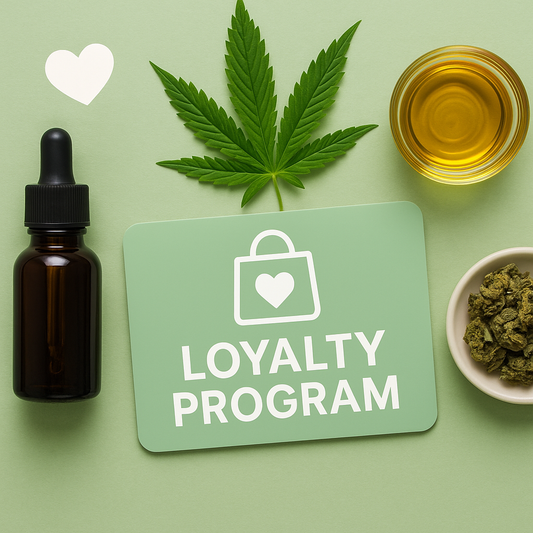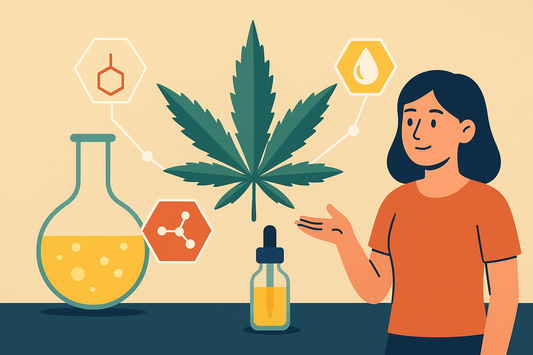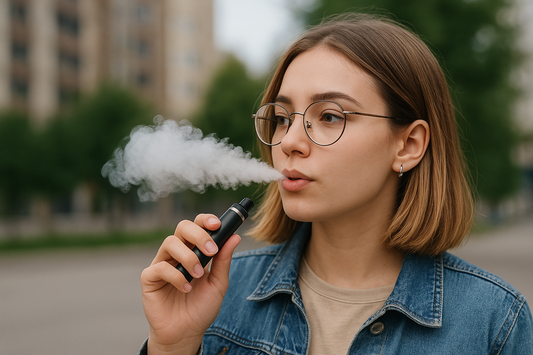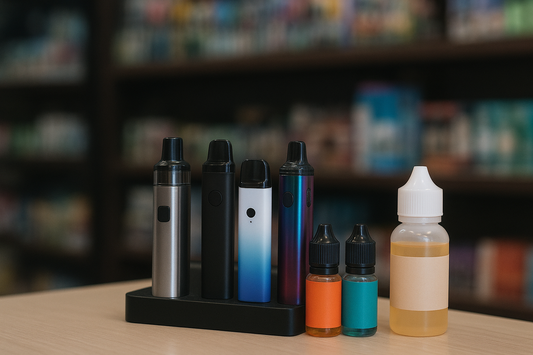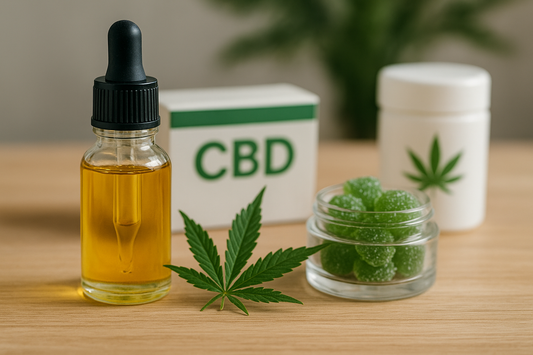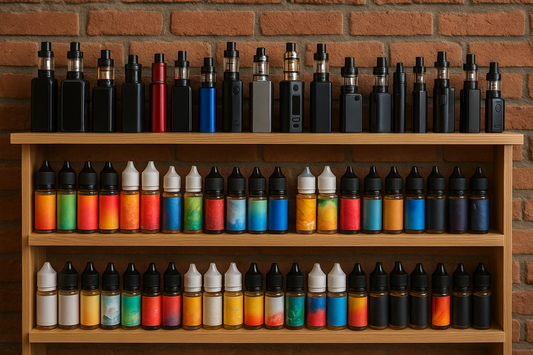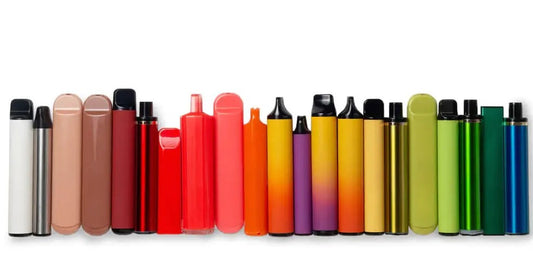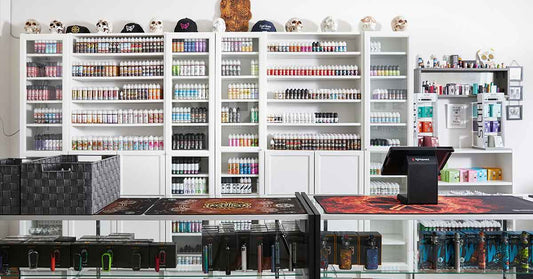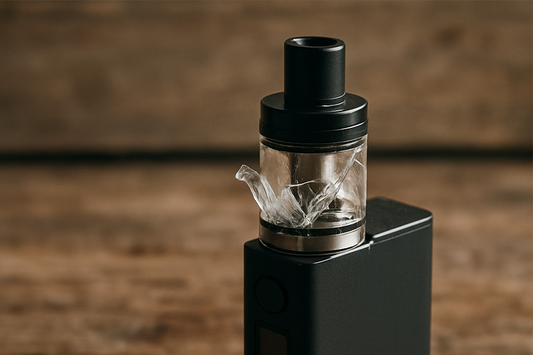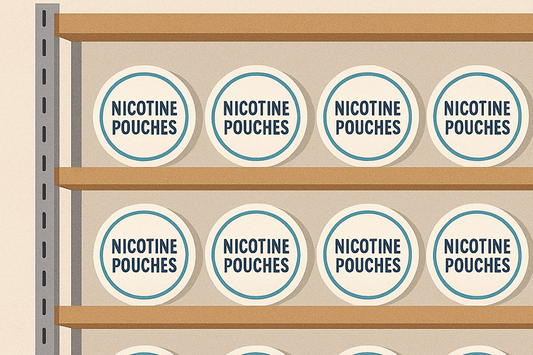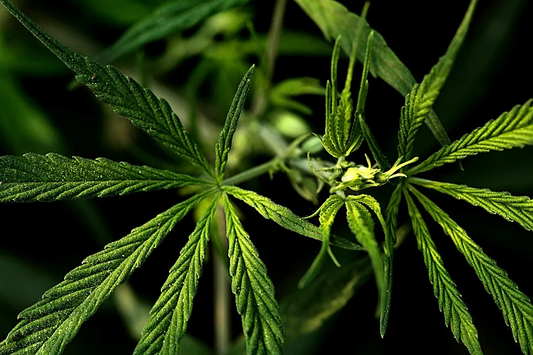
CBD Guide - Complete Guide to Cannabidiol
The information provided regarding CBD is for educational purposes only and should not be construed as medical advice. CBD products have not been evaluated by regulatory authorities for the treatment, diagnosis, or prevention of any disease. Always consult with a qualified healthcare professional before starting any new supplement or health regimen to ensure it is safe and appropriate for your specific medical conditions.
Welcome to our complete CBD guide! The wellness industry has always been dynamic and ever-changing, continually presenting new products, trends, and regimes. One that has captured the attention of both researchers and consumers alike is Cannabidiol, popularly known as CBD. You've probably seen it on the shelves of your local health store, read about it in articles, or heard of it from a friend. However, the world of CBD can be a tad overwhelming, with a sea of information floating around - some accurate and some not so much.
Our comprehensive guide to CBD aims to delve into everything there is to know about CBD. We'll take you through the details, from what CBD is, its various types, how it works, the potential health benefits, and risks, to its legality, usage, and purchase considerations. By the end of this guide you'll have a crystal clear understanding of CBD.

Contents
-
What is CBD? What is THC? How are they different?
-
Are there different kinds of CBD?
-
How is CBD harvested?
-
Who Can Take CBD?
-
How Does CBD Work?
-
How to Use CBD
-
How Does CBD Work?
-
Starting CBD - Your First Dose
-
Understanding CBD Concentration
-
Legal Status of CBD
-
Quality Control and Buying Tips
-
Conclusion
-
FAQ
-
CBD Tips
-
What substances are similar to CBD?
What is CBD? What is THC? How are they different?
tldr; CBD is a non-psychoactive cannabinoid (found in cannabis). THC is a psychoactive cannabinoid which gets a user "high".
In the world of cannabinoids, two compounds often steal the spotlight – Cannabidiol (CBD) and Delta-9-tetrahydrocannabinol (THC). Both are compounds found in the Cannabis sativa plant (hemp), but their effects on the human body are distinctly different.
CBD is a naturally occurring compound found abundantly in the plant. It's known for its potential therapeutic benefits and, importantly, it's not psychoactive, meaning it doesn't cause the 'high' associated with cannabis use. This attribute has propelled CBD's popularity as more people seek natural alternatives to manage various health issues.
On a molecular level, CBD is composed of 21 carbon atoms, 30 hydrogen atoms, and two oxygen atoms, resulting in the chemical formula C21H30O2. But what makes CBD unique is not just its chemical structure, but also how it interacts with the body's endocannabinoid system (ECS).

CBD doesn't directly bind to the main receptors of the ECS (CB1 and CB2), unlike THC. Instead, it influences the system indirectly, for instance, by inhibiting the FAAH enzyme responsible for breaking down anandamide, a crucial endocannabinoid. This action helps to increase anandamide levels, thereby indirectly influencing various physiological functions.
Now, let's move on to THC. This is the compound famously associated with the psychoactive effects or the 'high' experienced with cannabis use. Like CBD, THC has the same chemical formula, C21H30O2, consisting of 21 carbon atoms, 30 hydrogen atoms, and two oxygen atoms. The difference, however, lies in how these atoms are arranged, resulting in THC and CBD's distinct properties.

THC binds directly to the CB1 and CB2 receptors of the ECS, especially the CB1 receptors found primarily in the brain. This interaction alters the normal functioning of these receptors, leading to the psychoactive effects that THC is known for.
Both CBD and THC are important compounds derived from hemp, but they have very distinct properties. CBD is non-psychoactive and interacts indirectly with the ECS, while THC is psychoactive and binds directly to the ECS's receptors.
Are there different kinds of CBD?
tldr; CBD isolate is pure CBD. Other forms contain plant material and have other minor cannabinoids, which can produce different effects.
When it comes to CBD products, you'll encounter various terminologies, most notably, CBD Isolate, Broad Spectrum CBD, and Full Spectrum CBD. Additionally, CBD can also be obtained through methods like cold-press extraction. Each of these terms represents a different type of CBD product, distinguished mainly by their extraction processes and the cannabinoid content.

CBD Isolate: The Purest Form of CBD
As the name suggests, CBD Isolate is the purest form of CBD, isolated from the other compounds present in the cannabis plant. This type of CBD undergoes a rigorous extraction process followed by a refinement process that removes all other cannabinoids, terpenes, and plant matter, resulting in 99% pure CBD.
Consumers who prefer CBD Isolate are usually those who want to avoid THC completely (even in trace amounts) or those who want to get the highest concentration of CBD per serving. However, since it lacks the other cannabinoids and terpenes, it does not benefit from the 'entourage effect' – the synergistic interaction between various cannabinoids and terpenes that potentially enhances the therapeutic effect of the product.
Broad Spectrum CBD: Best of Both Worlds
Broad Spectrum CBD lies between CBD Isolate and Full Spectrum CBD. It contains multiple cannabinoids and terpenes found in the cannabis plant, but it's completely devoid of THC. The extraction process for Broad Spectrum CBD involves removing THC but preserving other cannabinoids and terpenes.
This type of CBD is ideal for those who want the combined benefits of multiple cannabinoids and terpenes but without any THC. This allows Broad Spectrum CBD users to experience the 'entourage effect' without the risk of consuming THC.
Cold-Pressed CBD: Natural and Unrefined
Cold-pressed CBD refers to a method of extraction, not a type of CBD. In this method, hemp seeds are pressed under cool conditions, ensuring that the oil doesn't get heated or undergo any chemical treatments. This helps maintain the natural and nutritional value of the oil, leading to a high-quality, unrefined CBD product.

This extraction method is usually used to produce CBD oil from hemp seeds, a product distinct from standard CBD oil. While hemp seed oil contains no CBD or THC, it's rich in beneficial fatty acids, vitamins, and minerals.
Understanding these different types of CBD – CBD Isolate, Broad Spectrum CBD, and the cold-pressed extraction method – can help consumers make informed decisions about the products they choose. Factors such as personal health goals, sensitivity to THC, and dietary requirements all play a role in determining the best type of CBD product for an individual.
Where does CBD come from?
tldr; CBD comes from the hemp/cannabis plant. It can be synthetically created, but this is not commonly used.
CBD comes from the Cannabis sativa plant and hemp. Hemp is preferred over cannabis for CBD extraction because it's naturally high in CBD and low in THC, making it legal to grow in many places.
The extraction of CBD from hemp is a critical and fascinating process, requiring precision, skill, and careful control over various factors to ensure that the final product is both potent and pure.
The most widely preferred method to date is the supercritical CO2 extraction. Picture the scene: carbon dioxide under immense pressure and low temperature, morphing into a state that possesses the qualities of both a liquid and a gas - this is a 'supercritical' state. In this unique state, CO2 is passed through the raw hemp material.

Like an expert locksmith using a master key, the supercritical CO2 navigates through the plant matter, dissolving and carrying away the precious cargo of CBD and other beneficial compounds. After this, the mixture is passed through a separator. This device acts like a customs officer, carefully sifting through the material, separating and drawing out the cannabinoids and terpenes. Finally, the CO2, now relieved of its duty, is allowed to return to its gas state. The end result? A potent, highly-concentrated solution of CBD and other cannabinoids.
However, not all CBD extraction methods are as complex or refined. The solvent extraction method, one of the oldest in the books, uses solvents such as ethanol, butane, propane, or isopropyl alcohol to extract the CBD. Think of it as the hemp plant taking a solvent bath, with the CBD and other cannabinoids then lifted and carried away by the solvent. After the bath, the solvent evaporates, leaving behind an oil rich in cannabinoids. But beware: if not executed properly, this method can leave harmful residues behind. This CBD guide does not recommend solvent extraction methods as they can be potentially dangerous.
Lastly, the olive oil extraction method presents an option that is as simple as it is safe, making it popular among DIY enthusiasts and small-scale producers. It's a process that mirrors a classic recipe: decarboxylate the hemp (essentially, heat it for a specific amount of time), then leave it to infuse in olive oil. This method is safe and cost-effective, but the resulting CBD-infused oil is perishable and must be stored in cool, dark conditions.
Beyond the plant, scientists in the past decade have start to experiment with the idea of creating artificial CBD in a lab, with no hemp ingredients. This process, known as synthetic biosynthesis, involves using genetically engineered microorganisms (such as yeast or bacteria) to produce CBD.
Biosynthesis of CBD works by introducing the genetic code for specific enzymes into the DNA of microorganisms. These enzymes are responsible for converting certain types of sugars or other nutrients into CBD. Essentially, the microorganisms become tiny factories, producing CBD as they metabolise their food.

The process starts with the introduction of genes into the yeast or bacteria that code for the enzymes involved in the biosynthesis of olivetolic acid (a precursor to CBD) and geranyl pyrophosphate. When these two compounds are combined in the presence of the enzyme CBDA synthase, cannabidiolic acid (CBDA) is formed. CBDA is a carboxylated form of CBD, and through the process of decarboxylation (usually by heat), CBDA is converted to CBD.
One of the primary benefits of this method is that it allows for the production of CBD in a highly controlled environment. This can lead to a high-purity product, free of any potential contaminants found in plant-based extraction methods. Moreover, biosynthesis could potentially be a more sustainable and scalable method for CBD production compared to traditional farming and extraction methods.
However, biosynthetic CBD is still in its nascent stages. It may be many years before synthetically produced CBD is commercially available.
How is CBD harvested?
tldr; CBD-rich hemp plants are grown, cut, then stored in darkness to "cure", before CBD extraction starts.
Harvesting CBD-rich hemp is a meticulous process that requires a balance of knowledge, skill, and timing to ensure that the plants yield high-quality CBD. The process starts with the observation of the hemp plant’s life cycle and ends with the cutting and drying of the plants.
Hemp plants typically require about 16 weeks of maturation from the time of planting. This timeline can vary depending on the specific variety and growing conditions, but most industrial hemp plants are ready for harvest in the UK between late September and October. During the growing period, farmers pay close attention to the plants' health, carefully monitoring for signs of disease or pests.

As the plants mature, farmers observe trichomes on the hemp plant. Trichomes are tiny, crystalline structures on the plant's surface where most cannabinoids, including CBD, are produced. With the aid of a magnifying glass or microscope, farmers look for changes plants' colour, which indicates the optimal time for harvesting. Resins that are milky white with a hint of amber suggest the plant is at its peak CBD potency.
When the time is right, farmers begin the harvesting process. This usually involves cutting the plant at the base and removing the fan leaves. Depending on the size of the operation, this process can either be done manually with hand-held tools or with the use of specialised machinery.
Following the cutting of the plants, they are left to dry. Drying is a critical step in the harvesting process. The plants are usually hung upside down in a dry room with controlled temperature and humidity. This process can take anywhere from 5 to 15 days.
Once dried, the hemp is then cured. During curing, the plants are stored in air-tight containers and kept in a cool, dry, and dark environment. The curing process can take a few weeks to a few months and helps to enhance the flavour and efficacy of the CBD.
The harvested, dried, and cured hemp is then ready to move on to the next step: extraction. It is at this stage that the CBD is collected from the plant matter, but that's a story for another section.
Planting and Cultivating Hemp
Growing hemp for CBD production is a delicate operation that requires a keen understanding of horticulture, the right tools, and a careful watch over mother nature's ever-changing conditions. In this dance of sunlight, soil, water, and care, even the smallest misstep could influence the plant's ability to produce high-quality CBD.
Planting hemp begins with selecting the right seeds or clones. Hemp cultivators often choose high-CBD, low-THC strains to stay within legal THC limits and maximise CBD production. This selection process is vital as the genetic makeup of the plant largely dictates its potential CBD yield.

Once the seeds or clones are ready, it's time to prepare the field. Hemp plants aren't overly fussy and can grow in a variety of soil types, but they prefer a well-aerated, loamy soil rich in organic matter. Soil pH is also crucial; hemp thrives in a slightly acidic to neutral pH environment, ideally between 6.0 and 7.0.
When it's time to put the seeds or clones in the ground, usually between late spring and early summer in the UK, careful spacing is crucial. Hemp plants need room to grow, typically requiring about 3-5 feet of spacing between plants.
Now that the seeds or clones are in the ground, the real work begins. Cultivating hemp is a continuous process that requires diligence and care. The plants need plenty of sunlight, ideally receiving 12-16 hours per day. Regular watering is essential, especially during the first six weeks or during periods of dry weather. However, hemp is susceptible to waterlogging, so well-draining soil and careful irrigation are key.
Hemp plants are hearty and can often withstand pests and diseases better than other crops. Still, it's important to regularly check the plants for signs of trouble. Anything from aphids to fungal infections can threaten a crop. If issues arise, there are organic and synthetic options to treat most common problems.
Lastly, the plants need nutrients to grow and produce high-quality CBD. Hemp plants deplete the soil of nutrients, particularly nitrogen, phosphorous, and potassium. Regular soil tests can help farmers stay on top of nutrient levels and amend the soil as necessary.
Cultivating hemp for CBD production is a season-long commitment, requiring regular attention and care. But the reward—a healthy crop ready for CBD extraction—makes the hard work worth it.
Harvesting the Hemp Plants
Once the hemp plants reach maturity, which usually occurs about 3 to 4 months after planting, they are ready for harvesting. The timing of the harvest is crucial; it must happen when the CBD content of the plant is at its peak. Harvesting too early or too late can result in lower CBD yields.

The actual harvesting process typically involves cutting down the hemp plants and removing the large leaves. Some growers also trim the smaller leaves to make the subsequent processing more efficient.
Guide to Drying and Curing
After the bustling activity of the harvest, the process of drying and curing hemp takes over, signalling a quieter, more patient phase of CBD production. This stage is a delicate balancing act between environmental control and time, ensuring the preservation of the plant's beneficial compounds.
Drying begins immediately after harvesting. The plants, now cut and trimmed, are hung upside down in a well-ventilated, dark, and temperature-controlled environment. This specific setting, usually around 60-70 degrees Fahrenheit with a humidity level of about 60%, is critical to avoid the growth of mould and other pathogens that can spoil the hemp. It's also key to preventing the valuable cannabinoids and terpenes from degrading due to heat and light.
Hanging the plants upside down allows the remaining moisture to travel downwards, concentrating in the flowers where the most CBD is contained. The drying process, which takes about 7-14 days, slowly reduces the water content in the plant material, preparing it for the extraction process.
The shift from drying to curing is subtle but significant. Once the plants are dry to touch and the smaller stems snap rather than bend, the curing phase begins. During curing, the dried hemp is usually cut into smaller, more manageable pieces and placed into airtight containers, often glass jars. These are stored in a cool, dark location.
Over the next few weeks to months, the curing process slowly but significantly transforms the hemp. It allows for the gradual breakdown of leftover chlorophyll and non-decarboxylated cannabinoids, enhancing the taste and potency of the final product. The airtight jars are opened periodically, a process known as 'burping,' to release any accumulated humidity and replenish the oxygen supply.
Curing is as much an art as it is a science. Done correctly, it can significantly enhance the quality of the CBD derived from the hemp, ensuring that consumers receive a potent, flavourful, and high-quality product. Though it demands patience, the careful process of drying and curing hemp is a crucial stop on the journey from plant to CBD product.
Guide to CBD Testing
From verifying CBD concentrations, to scanning for harmful contaminants, the testing stage scrutinises every aspect of the CBD product to guarantee its safety and efficacy.
Testing can take place in-house, within the confines of the manufacturer's own laboratories. However, for an added layer of transparency and objectivity, third-party testing is often the preferred choice. Independent labs, detached from the manufacturer's interests, delve into the CBD product's profile, dissecting and analysing its components in granular detail.

The focus of this microscopic analysis is twofold. Firstly, labs measure the exact concentrations of CBD and other cannabinoids present in the product. This serves to ensure alignment with the manufacturer's stated amounts. Additionally, in many regions, legal parameters dictate that THC - the psychoactive component of cannabis - must not exceed a specific limit, typically 0.2% or 0.3%. Lab tests validate adherence to these legal thresholds.
Secondly, the tests are designed to screen for potentially harmful contaminants. Hemp plants, from which CBD is extracted, are known to be bioaccumulators, absorbing materials from their surroundings. While this characteristic aids in the growth and vitality of the plant, it can also mean that harmful substances, such as heavy metals, pesticides, or mould, can find their way into the plant, and subsequently, into the CBD product. Testing ensures that such contaminants are not present in quantities that could pose a risk to health.
The comprehensive results of this meticulous examination process are usually made accessible to consumers via a Certificate of Analysis (COA). This official document, issued by an accredited lab, presents a full breakdown of the product's composition, giving consumers a transparent insight into what they are buying.
Guide to CBD Packaging
Post testing, the product is ready to be presented to the world, which brings us to the packaging stage. Here, the CBD is encased in packaging designed not just for aesthetic appeal, but importantly, to protect the integrity of the product and extend its shelf life.
The packaging should offer an airtight seal to prevent the intrusion of air, moisture, and other environmental factors that could affect the CBD's quality. Additionally, as cannabinoids are sensitive to light and heat, CBD products are often packaged in darkened, UV-protective containers and advised to be stored in a cool, dry place. This precaution helps maintain the potency of the CBD over time and prevents degradation.
In the same vein, the packaging also plays a vital role in ensuring the product reaches the consumer in a tamper-proof manner. This is particularly crucial for online purchases, where the product will have to endure transit before reaching the consumer.

However, the packaging isn't just a protective shell. It's also a platform for communication between the brand and the consumer. Labels on the packaging provide critical information about the product. This includes not only the CBD and THC content, but also the list of ingredients, the suggested serving size, the batch number, and importantly, the QR code or a link leading to the product's third-party test results. Some brands also choose to highlight their organic or cruelty-free credentials on the package, if applicable.
Who Can Take CBD?
CBD is generally considered safe for most people, including adults, some children, and even pets. However, since everyone's body and health status are unique, it's always best to consult with a healthcare professional before starting to use CBD, especially if you're pregnant, breastfeeding, or have any medical conditions.
The growing interest in CBD is due to its potential therapeutic benefits. Its wide range of potential applications has led to an array of people turning towards CBD for different reasons. However, it's crucial to understand who can take CBD and when it might not be the most suitable choice.
Guide for Adults and CBD
CBD is largely used by adults across all age groups. Adults may turn to CBD for various reasons, such as managing stress and anxiety, promoting better sleep, or addressing physical discomfort and inflammation. Many people choose CBD because it offers potential relief without the "high" associated with THC.
While CBD is generally well-tolerated among adults, individual responses can vary. Factors such as the individual's body chemistry, weight, metabolism, and the condition they're trying to address can influence how CBD is absorbed and processed by the body.

Guide for Older Adults and CBD
As we age, the occurrence of various health-related issues like chronic pain, arthritis, sleep disorders, and neurodegenerative diseases may increase. CBD is growing in popularity among older adults as a natural supplement to manage these conditions and improve their quality of life. Additionally, CBD's potential neuroprotective properties have sparked interest in its use for conditions such as Alzheimer's and Parkinson's disease.
However, older adults are often more sensitive to medications and supplements due to age-related physiological changes and the likelihood of concurrent medication use. Therefore, starting with a lower dose and gradually increasing it while monitoring for side effects is recommended.
Guide for Children and CBD
The use of CBD among children is a sensitive topic and warrants careful consideration. However, the FDA has approved a CBD-based medication, Epidiolex, for treating rare and severe forms of epilepsy in children, namely Dravet syndrome and Lennox-Gastaut syndrome.
Parents and caregivers may also consider CBD for children with autism, ADHD, or anxiety. It's important to remember that CBD's long-term effects on developing bodies and brains are not fully understood. Therefore, it's crucial to consult with a paediatrician or a healthcare provider experienced in cannabis use before administering CBD to children.
Guide for Pregnant and Breastfeeding Women
When it comes to CBD use in pregnant and breastfeeding women, the waters remain murky due to limited scientific research in this area. Pregnancy and breastfeeding are critical periods for both the mother and the baby, and any substances consumed during these periods have the potential to affect the child's development.
While CBD is widely accepted as safe and beneficial for various health conditions, the effects it might have on an unborn child or a nursing infant are still largely unknown. It's important to remember that substances a mother consumes can cross the placental barrier during pregnancy and can be passed on to the infant through breast milk.
In the case of CBD, the research is scant, and what little exists tends to raise more questions than answers. Some animal studies suggest potential risks, but how these findings translate to humans is unclear. The lack of robust, high-quality studies in humans makes it impossible to accurately understand the potential risks involved.

Given these unknowns, most healthcare professionals and organisations like the Food and Drug Administration (FDA) and the World Health Organisation (WHO) advise against the use of CBD by pregnant and breastfeeding women. They suggest that the potential risks, however uncertain, aren't worth taking.
However, it's also crucial to acknowledge that pregnancy and the postpartum period can be challenging, with many women experiencing health issues such as nausea, pain, anxiety, and depression. For some, the potential benefits of CBD might seem like a promising solution. But, given the uncertainty and potential risks, it's crucial to discuss the decision with a healthcare provider, who can provide personalised advice based on the current evidence and individual health status.
In conclusion, due to the lack of conclusive scientific evidence on the safety of CBD use during pregnancy and breastfeeding, it's generally advised that women avoid its use during these periods. Consultation with a healthcare provider should always be the first step for anyone considering CBD use, but especially so for pregnant and breastfeeding women. As research progresses, more definitive guidance may become available, but until then, caution remains the watchword.
Individuals with Chronic Conditions
Living with a chronic condition can often feel like an uphill battle. The persistent, long-lasting nature of these conditions can profoundly impact an individual's quality of life, and finding effective symptom management strategies often becomes a top priority. In this landscape, CBD has emerged as a beacon of potential relief for many people living with chronic conditions, from arthritis and multiple sclerosis (MS) to chronic pain and gastrointestinal disorders like Crohn's disease.
One of the primary appeals of CBD for individuals with chronic conditions is its purported anti-inflammatory and analgesic, or pain-relieving, properties. Inflammation is a common denominator in many chronic conditions, contributing to pain and furthering disease progression. Therefore, substances like CBD that might help reduce inflammation are of great interest.
For instance, in conditions like arthritis and MS, CBD's potential ability to alleviate inflammation could translate to less pain and improved mobility. Similarly, for individuals living with chronic pain, be it from a condition like fibromyalgia or a persistent headache disorder, the potential analgesic properties of CBD might offer some respite.
Additionally, in the case of gastrointestinal disorders like Crohn's disease, the potential anti-inflammatory properties of CBD might help manage the inflammatory responses that characterise these conditions. This could potentially lead to a reduction in symptoms such as abdominal pain, diarrhoea, and fatigue.
However, it's crucial to underscore that individuals with chronic conditions often have complex treatment regimens, usually involving multiple medications. CBD, like any other substance, has the potential to interact with these medications, altering their efficacy and potentially leading to unwanted side effects. These interactions can be particularly concerning in individuals with chronic conditions, as they could exacerbate symptoms or lead to new issues.
Athletes
The world of sports is one of physical exertion, discipline, and precision. It's an environment where every ounce of strength, every dash of speed, and every moment of recovery can make a world of difference. With such physical demands, athletes often look for ways to optimize their performance and recovery. In this context, CBD has emerged as a potential supplement that could offer several benefits.

Athletes frequently deal with muscle soreness and inflammation due to the intense workouts and high levels of physical stress they place on their bodies. Here, CBD's potential anti-inflammatory properties might come into play. By possibly reducing inflammation, CBD could help alleviate muscle soreness and expedite recovery following a demanding workout or a tough competition.
But the potential benefits of CBD for athletes may not end with muscle recovery. Sleep and relaxation are crucial components of an athlete's recovery process, and CBD could potentially aid in these aspects as well. Preliminary research and anecdotal evidence suggest that CBD might have calming effects, which could help athletes relax after intense physical exertion. Furthermore, CBD might also contribute to improved sleep quality, providing athletes with the restful sleep they need for their bodies to recover and perform optimally.
Of course, athletes must navigate a landscape of strict regulations, including anti-doping rules. Fortunately, the World Anti-Doping Agency (WADA) has removed CBD from its list of prohibited substances. This means that athletes can use CBD without violating these rules. However, they must tread carefully. While CBD itself is not banned, other cannabinoids, like THC, are. Therefore, athletes must ensure they use CBD products free from prohibited substances, like THC.
Choosing a CBD product from a reputable supplier that provides third-party lab testing can help ensure the product is compliant with regulations. Lab testing can confirm that the product contains the stated amount of CBD and is free from prohibited substances. In this way, athletes can confidently incorporate CBD into their recovery regimen.
In conclusion, the potential anti-inflammatory, calming, and sleep-promoting effects of CBD could make it a beneficial addition to an athlete's recovery routine. However, athletes must use CBD responsibly, choosing high-quality, tested products and considering any potential interactions with other supplements or medications they may be taking.
People with Mental Health Disorders
Mental health disorders can significantly impact an individual's daily life, and managing these conditions often involves a combination of therapy, lifestyle changes, and medication. In recent years, CBD has entered the conversation as a potential supplemental treatment for certain mental health disorders, including anxiety, depression, and post-traumatic stress disorder (PTSD).
Anxiety, a condition that affects millions of people globally, can manifest in a variety of ways, from general anxiety disorder (GAD) to social anxiety disorder and panic disorder. Some individuals dealing with these conditions might consider using CBD as part of their management strategy. Preliminary research suggests that CBD might have potential anxiolytic effects, meaning it could help reduce anxiety symptoms. Its potential calming effects could help individuals manage anxiety-triggering situations and possibly improve their overall quality of life.
Depression is another prevalent mental health disorder, characterized by persistent feelings of sadness and a lack of interest in previously enjoyable activities. While the research is still in the early stages, some studies suggest that CBD might exhibit antidepressant-like effects. The potential mechanism behind this involves the interaction of CBD with serotonin receptors in the brain, which are believed to play a key role in mood regulation.

As for PTSD, a condition often associated with traumatic experiences, early research and anecdotal evidence suggest that CBD might contribute to symptom management. Specifically, CBD might aid in reducing nightmares and the replaying of negative memories.
However, it's crucial to understand that while CBD may offer potential benefits as a supplemental treatment, it shouldn't replace prescribed medications or therapies without a discussion with a healthcare professional. Mental health disorders require careful management, and changes to treatment plans should always be made under professional guidance. It's also important to note that everyone's experience with mental health disorders is unique, and what works for one person may not work for another.
Additionally, while CBD is generally well-tolerated, it may cause side effects like fatigue, diarrhea, and changes in appetite or weight. There's also the potential for CBD to interact with other medications, which is another reason to consult with a healthcare professional before starting to use it.
Guide for CBD and Pets
Finally, pets are also part of the CBD conversation. Pet owners may use CBD for their pets dealing with anxiety, arthritis, seizures, and more. However, research into the safety and efficacy of CBD use in animals is still in its infancy, so always consult with a veterinarian before introducing CBD to your pet.
How Does CBD Work?
Understanding how CBD works requires a basic understanding of the endocannabinoid system (ECS), a complex cell-signalling system within the body. The ECS plays a crucial role in maintaining homeostasis, regulating functions such as sleep, mood, appetite, memory, and immune response.
Your Guide to the Endocannabinoid System and CBD's role
The ECS comprises endocannabinoids (naturally produced cannabinoids in the body), receptors, and enzymes. The two key endocannabinoids are anandamide (AEA) and 2-arachidonoylglyerol (2-AG). There are also two main types of receptors: CB1 receptors, mostly found in the central nervous system, and CB2 receptors, located in the peripheral nervous system, especially immune cells.

CBD's role in the ECS is unique. Unlike THC, it doesn't bind directly to CB1 or CB2 receptors. Instead, it appears to prevent endocannabinoids from being broken down, allowing them to have more of an effect on your body. It might also bind to a wide variety of protein-based receptors, including serotonin and vanilloid receptors, affecting pain perception, mood, and other biological responses.
A Guide to CBD Metabolisation
Following ingestion, CBD first travels through the digestive tract where it is broken down before being absorbed into the bloodstream. If CBD is applied topically, it permeates through the skin layers before entering localised areas of the circulatory system. CBD administered sublingually (under the tongue) or through inhalation bypasses the digestive tract, leading to quicker absorption.
Once absorbed into the bloodstream, CBD then embarks on its journey towards the liver, the body's central hub for drug metabolism. The liver is equipped with a group of enzymes known as the Cytochrome P450 (CYP450) enzyme system. This system is responsible for metabolising potentially toxic compounds, including over 60% of any drugs you have consumed.
Upon reaching the liver, the CYP450 enzyme system gets to work on CBD. Through a process called hydroxylation, these enzymes catalyse a reaction that breaks down CBD into more than 100 different metabolites, many of which are not used by the body and are quickly excreted. However, a few metabolites might be biologically active and could influence the effects of CBD in the body.
One of the major metabolites produced by this process is 7-COOH-CBD, which is primarily excreted through the urine. The process also yields the metabolite 7-OH-CBD, which scientists believe may have significant therapeutic potential, although research in this area is still ongoing.
After being processed by the liver, the metabolites of CBD are then circulated back into the bloodstream. Here, they interact with the body's endocannabinoid system (ECS), a network of receptors present throughout the body involved in regulating various physiological processes such as mood, pain sensation, sleep and appetite. This interaction with the ECS is what leads to the potential therapeutic effects of CBD.
How CBD interacts with the body
CBD's interaction with the body is complex. Its non-direct interaction with the CB1 and CB2 receptors, coupled with its influence on various protein-based receptors and ion channels, suggests that CBD works on many levels within the body. Its potential effects range from anti-inflammatory and analgesic (pain-relieving) properties to potential anxiolytic (anxiety-reducing) and neuroprotective effects. However, much research is still needed to fully understand these interactions.
Potential Health Benefits of CBD
There's a growing body of research pointing to the potential health benefits of CBD. Although it's important to note that while some studies have yielded promising results, many of these potential benefits are not yet definitively proven.

Current research into the efficacy of CBD for various conditions suggests that this natural compound may hold a wealth of therapeutic benefits. From its potential anti-inflammatory and analgesic properties to its prospective role in managing anxiety, depression, and even certain neurodegenerative diseases, the spectrum of CBD's potential applications is vast and intriguing.
When it comes to pain and inflammation, CBD is rapidly gaining recognition. Several studies have shown promising results, indicating that CBD may play a significant role in managing chronic pain, particularly in conditions such as arthritis and multiple sclerosis. It's believed that CBD interacts with the body's endocannabinoid system, which plays a role in pain and inflammation regulation, possibly helping to alleviate these symptoms.
In the realm of mental health, CBD has also demonstrated potential. Preliminary research suggests that CBD may have anti-anxiety and antidepressant effects. It's thought that CBD influences the brain's response to serotonin, a neurotransmitter intricately tied to our mental health and wellbeing. Consequently, CBD is being explored as a natural alternative for managing conditions such as generalized anxiety disorder, social anxiety disorder, and depression.
Sleep disorders, too, are an area where CBD is showing potential. Early research indicates that CBD may help with conditions like insomnia by tackling the root issues such as pain or anxiety that often cause sleep disturbances. Furthermore, unlike many traditional sleep aids, CBD doesn't appear to lead to dependence or cause grogginess the next day, making it a potentially more appealing option.
Epilepsy is another field where CBD has made significant strides. CBD's potential as a seizure-suppressant has been increasingly recognized, leading to the FDA's approval of Epidiolex, a CBD-based drug for treating two severe forms of childhood epilepsy: Dravet syndrome and Lennox-Gastaut syndrome. This milestone has heightened interest in further exploring CBD's potential in managing other forms of epilepsy.
Finally, research is also delving into the potential of CBD in managing neurodegenerative diseases, such as Alzheimer's and Parkinson's disease. Early studies suggest that CBD may have neuroprotective properties, meaning it could potentially help protect nerve cells against damage, degeneration, or impairment of function. These findings, while preliminary, are creating a promising avenue for future research into CBD's role in neurodegenerative disease management.
While CBD research is still in its relative infancy and more rigorous, large-scale studies are needed, the current evidence points to a wide array of potential therapeutic applications for this natural compound. As our understanding of CBD continues to grow, it's likely that the list of conditions for which CBD may offer benefits will continue to expand.

Limitations of current CBD research
While these findings are indeed promising, it's crucial to acknowledge the limitations of current CBD research. Many studies have been done on animals, and human studies often have small sample sizes. More robust, large-scale clinical trials are needed to definitively establish the effectiveness and safety of CBD for various conditions. Furthermore, we still don't fully understand the long-term effects of CBD use. We continuously update this guide to CBD as new information becomes available.
Side Effects of CBD
Fatigue is a potential side effect of CBD use. Some individuals report feeling tired or fatigued after taking CBD. Interestingly, this reaction might be dose-dependent, with higher doses of CBD linked to increased sleepiness. For some individuals, especially those using CBD to aid with sleep disorders, this could even be a desired effect.
Another potential adverse reaction is diarrhea, often associated with high doses of CBD. Studies show that this is more likely to occur with higher doses and can typically be mitigated by lowering the dose.
CBD might also influence appetite and weight in some individuals. While it's well-known that THC, the psychoactive cannabinoid in cannabis, can cause the "munchies," CBD's impact on appetite is less clear. Some users report increased appetite, while others report a decrease, leading to potential changes in weight.
While less common, there are other potential side effects that some people might experience when using CBD. These include dry mouth, often referred to as "cottonmouth." This is thought to occur because cannabinoids may interact with receptors that influence saliva production, leaving the mouth feeling dry.
Lightheadedness is another potential side effect. Some individuals might experience temporary drops in blood pressure and subsequent feelings of lightheadedness after taking CBD, especially at higher doses.
Lastly, though many use CBD for its potential calming effects, there are rare instances where some people might experience changes in mood, including irritability and agitation.
Given these potential side effects, it's crucial to start with low doses when first starting CBD and gradually adjust based on how your body reacts. As always, consult with a healthcare provider before beginning any new supplement regimen, including CBD.
Potential drug interactions and long-term use
One critical aspect to consider when starting CBD is its potential to interact with other drugs. This concern arises from the fact that CBD is metabolized by the body using certain enzymes, a set that many other medications also utilize. Consequently, CBD can affect the way your body processes these medications, potentially enhancing or diminishing their effects.
For example, CBD could potentially increase the levels of certain medications in your blood. This is similar to the well-known 'grapefruit effect,' wherein certain compounds in grapefruit can interfere with the enzymes responsible for drug metabolism. If you take a medication, like the blood thinner warfarin, the interaction with CBD could potentially enhance its effect, leading to adverse side effects.

Another aspect worth considering is the long-term use of CBD. While CBD is generally considered safe, studies into the long-term effects are still ongoing. As with any substance, long-term use may have different effects, and monitoring changes in your body is essential.
In light of these considerations, it's absolutely crucial to consult with a healthcare provider before starting CBD, particularly if you're on other medications. Your doctor can monitor you for potential drug interactions and adjust your medication doses accordingly to avoid adverse effects. They can also guide you on safe and effective dosages, and monitor any potential long-term effects of CBD use. Your health and safety should always be the priority when considering any new supplement or medication.
Risks with Long-Term Use
Long-term use risks associated with CBD are not fully understood, largely due to a lack of extensive long-term studies. Nonetheless, a few potential risks have been suggested in preliminary research.
One such concern arises from a study involving mice, where high doses of CBD led to a rise in liver enzymes, an indicator of liver damage. While it's important to consider these results, it's equally crucial to understand that the doses used in these animal studies are typically much higher than what humans would usually consume. CBD remains extremely safe and well-tolerated by the vast majority of people.
Furthermore, it's not clear whether these findings directly translate to humans. More extensive long-term human studies are needed to understand the potential long-term effects fully, but for now, the science suggests CBD is probably very safe.
How to Use CBD - CBD Dosing Guide
CBD comes in many forms, each with its own set of benefits and drawbacks. The form of CBD you choose largely depends on your needs, lifestyle, and personal preferences.
Dosing guide
In the last decade, the popularity of CBD has skyrocketed in the UK and around the world, emerging as a potent player in the world of wellness. CBD has claimed its rightful place in the everyday lives of millions of people. With countless purported benefits and an extensive range of products to choose from, the world of CBD may feel a little overwhelming, particularly when it comes to determining the right CBD dose.
This guide aims to simplify that for you! We'll delve into the science, examine optimal CBD dosage, and unravel how to navigate through the CBD journey seamlessly.
Finding the right dose - what are the factors?
Individual responses to CBD can vary due to many, many factors. Before we can begin to find the right dose, it's essential we understand these:
Body Weight

Heavier individuals may require higher doses of CBD for optimal effects due to an increased amount of body fat.
Cannabinoids are fat-soluble and may be stored in fat cells, reducing their availability in the bloodstream.
Start with a dosage recommendation based on your weight, and then adjust based on your observed response.
Metabolism Rate

Metabolic rate impacts how quickly your body processes and eliminates substances, including CBD.
People with faster metabolism might need a higher dose or more frequent doses of CBD as the compound is processed more quickly.
Begin with a standard dose and consider adjustments if the effects seem to diminish rapidly.
Genetics
Genetic factors, such as natural variations in the production of endocannabinoids or cannabinoid receptors, can influence how you respond to CBD.
For instance, a person with a genetic predisposition for lower endocannabinoid production might benefit more from higher doses of CBD.
However, without genetic testing, this can be a complex variable to measure directly. Instead, take note of your body's response and adjust your CBD dosage accordingly.
Gender

Gender can play a role in the metabolism of substances due to physiological differences between men and women, potentially leading to different responses to CBD.
Hormonal differences can also affect the sensitivity of cannabinoid receptors. Women might consider starting at a slightly lower dose and monitor their body's response before making dosage adjustments.
Age

As we age, our bodies undergo metabolic and physiological changes that can affect the absorption and metabolism of substances like CBD.
Older adults may experience slower metabolism, which could result in prolonged effects of CBD.
This could mean a lower starting dose might be sufficient. Always begin with the lowest recommended dosage and adjust based on your body's response.
Health Status
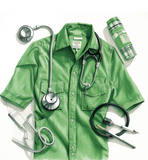
Your overall health condition, including any chronic or underlying health issues, may influence your body's response to CBD.
Certain health conditions might increase the body's sensitivity to CBD, while others might necessitate higher doses for noticeable effects.
Consider consultation with a healthcare provider to determine a suitable starting dose considering your health status.
Lifestyle

Physical activity level, diet, and sleep patterns can all impact how your body metabolizes and responds to CBD.
Regular exercise and a balanced diet might enhance your body's response to CBD, potentially necessitating a lower dose.
Monitor your body's reaction to CBD as you incorporate it into your lifestyle and make adjustments as necessary.
Stress Level

Stress can impact the endocannabinoid system, potentially changing the effectiveness of CBD.
Higher stress levels might require higher doses of CBD, but it's essential to consider other stress management techniques too.
Start with a standard dose and adjust based on your stress level and how your body responds.
Use of Other Medications

Some drugs may interact with CBD, affecting its absorption, distribution, metabolism, and excretion, and hence the effectiveness and potential side effects.
Always consult with your healthcare provider before starting CBD, especially if you're taking other medications, and closely monitor any changes in how you feel.
CBD Formulation

Different CBD products have different absorption rates.
For instance, CBD oils and tinctures are typically more bioavailable than oral capsules, meaning your body can use more of the CBD you ingest.
The method of consumption impacts the onset, intensity, and duration of the effects. Choose a formulation that fits your lifestyle and needs, and adjust your CBD dose based on the product's bioavailability.
CBD Spectrum

Full-spectrum, broad-spectrum, and CBD isolate products can have varying effects.
Full-spectrum products contain all the cannabinoids, including trace amounts of THC, which could increase CBD's effectiveness due to the "entourage effect."
Meanwhile, isolates only contain CBD, which might necessitate a higher dose for similar effects. Consider your personal preferences and legal limitations when choosing a product spectrum.
Time of Day

The time of day when you take CBD could influence its effects.
Some people may find CBD energizing and best taken in the morning, while others may find it more calming and prefer to take it in the evening.
Try different timing strategies to see what works best for your body and routine.
Hydration Levels

Staying properly hydrated can enhance your body's ability to process CBD.
Dehydration could slow the absorption of CBD and diminish its effects.
Make sure to maintain adequate hydration when taking CBD.
Diet

High-fat meals can increase the bioavailability of CBD, potentially enhancing its effects.
Consider your dietary habits when deciding on a CBD dosing strategy, and remember to take CBD with a meal or snack for optimal absorption.
Tolerance

Regular use of CBD can lead to the development of tolerance, meaning you might need to increase your dose over time to achieve the same effects.
Monitor your body's response to CBD, and adjust your dosage as necessary.
Alcohol Use

Alcohol can impact the metabolism of CBD and potentially enhance its sedative effects.
If you consume alcohol, consider its potential interaction with CBD, and consult with your healthcare provider for guidance on safe use.
Sleep Patterns

Sleep deprivation can impact your body's response to CBD.
Adequate sleep might enhance the effectiveness of CBD. Consider your sleep patterns when assessing your body's response to CBD, and adjust your dosage as necessary.
Guide to Starting CBD - Your First Dose
Right! Now that you understand our guide to what individual factors can effect CBD dosage, let's start determining what the right dose it for you.
| Body Weight | Micro-dose | Low Dose | Typical Dose | Large-dose |
| <37.5kg | 5mg | 10mg | 13mg | 25mg |
| 38 - 70kg | 8mg | 12mg | 15mg | 30mg |
| 70-110kg | 10mg | 18mg | 20mg | 40mg |
| >110kg | 15mg | 22mg | 25mg | 50mg |
*Men are likely to require a 10-20% increase to dosage. Never take a high-dose of CBD and operate machinery or vehicles.
Start low and go slow — this is the widely accepted guidance when beginning your journey with CBD. You might start with a low CBD dose of around 5-10mg per day, gradually increasing by 5-10mg per day until you notice desired effects. For potential anxiety relief, initial doses are often higher, starting around 30-50mg.
This method, also known as titration, allows you to personalise your CBD dosage and minimise potential side effects. Remember, the goal isn't to reach the highest dose possible, but to find a level that offers you the benefits you're looking for. Don't worry if you initially dose more than expected - CBD is very safe and well-tolerated by the body.
CBD Dosage - A Guide for Different Products
CBD comes in many forms — from oils and capsules to topicals and edibles. Each product has a different rate of absorption (bioavailability), which can impact the effectiveness of the CBD dose.
CBD Oils and Tinctures: These are typically taken under the tongue, allowing CBD to be absorbed directly into the bloodstream through the mucous membranes. This method offers high bioavailability, meaning a 20mg CBD dose taken sublingually may have more noticeable effects than the same dose taken in capsule form.

CBD Capsules and Edibles: In edible form, CBD must pass through the digestive system before reaching the bloodstream, which can delay onset of effects but also extend their duration. This could be ideal for those seeking long-lasting relief, such as for chronic pain or sleep issues. A standard CBD dose in capsule form might range from 15-45mg.
CBD Topicals: These products are applied directly to the skin, targeting localised areas for relief of pain or inflammation. While not much CBD enters the bloodstream through the skin, it interacts with cannabinoid receptors in the skin's surface. CBD dosage with topicals varies greatly depending on the product concentration and the area of application.
CBD Vapes: When CBD is inhaled, it enters the bloodstream almost immediately through the lungs. This method provides the quickest onset of effects, but they also tend to wear off sooner than other methods. Be aware that vaping may carry additional risks related to inhalation of the product's base compounds.
Understanding CBD ConcentrationThe concentration of CBD in your chosen product plays a critical role in determining your CBD dose. CBD concentration is generally listed on the product label in milligrams (mg), indicating the total amount of CBD in the product. For instance, a 30ml bottle of CBD oil that contains 600mg of CBD has a concentration of 20mg of CBD per millilitre.
Keeping Track of Your CBD DosageTracking your CBD usage and effects can be an invaluable tool on your journey to finding the optimal CBD dose. Keep a record of the amount of CBD you take, when you take it, and what effects you experience. This will help you gauge how your body responds to different doses of CBD and assist in tailoring your CBD regimen for maximum benefit.

Everybody's response to CBD is unique, and the optimal CBD dosage can vary. Therefore, paying attention to your body is of utmost importance. Some people may experience relief at a lower CBD dose, while others may require a higher amount to feel the same effects. If you experience unwanted side effects such as dizziness or upset stomach, it could be an indication that your dose needs adjustment.
Consistency is KeyLike any other health supplement, consistency is key when taking CBD. Regular usage can help maintain a stable level of CBD in your body, which can enhance the effectiveness of the endocannabinoid system.
Taking your CBD dose at the same times every day can also help make it a routine and ensure you don't miss a dose.
Remember that this guide is a starting point and may not apply to everyone, considering the factors mentioned above.
Guide to the Legal Status of CBD
The legal landscape of CBD is continually evolving and can be quite complex, varying from country to country and even within regions in the same country.
In the United States, the turning point for CBD legality was the passing of the Agriculture Improvement Act of 2018, more commonly known as the 2018 Farm Bill. This bill legalised the cultivation of industrial hemp (defined as cannabis with less than 0.3% THC) at the federal level and removed hemp-derived products from the Controlled Substances Act. However, it's essential to note that while hemp-derived CBD is legal at the federal level, individual state laws can vary greatly.
In the UK, CBD is entirely legal, provided it is derived from an industrial hemp strain that's EU-approved and contains no more than 0.2% THC. However, it's illegal to sell CBD oil as a medicine without a proper license, which is why it's often marketed as a food supplement.
Quality Control and CBD Buying Guide
As with any booming industry, the CBD market has its fair share of snake oil sellers who are looking to make a quick profit at the expense of quality and transparency.
Importance of buying from reputable sourcesBuying from a reputable source is crucial. Reputable companies will provide comprehensive details about their extraction methods, sources of hemp, and third-party testing.
Tips on what to look for on product labels
Here are some tips on what to look for:
- Amount of CBD and THC: The label should clearly state the amount of CBD and THC in the product.
- Ingredients: Look for products with all-natural, and if possible, organic ingredients. Avoid products with artificial colours or flavours.
- Type of CBD: As discussed earlier, know whether you're getting a full-spectrum, broad-spectrum, or CBD isolate product.
Discussion on the role of third-party lab testing
Third-party lab testing is a critical factor to consider when buying CBD. These independent labs can verify the claimed amounts of CBD and THC and check for the presence of any harmful contaminants. Always look for a Certificate of Analysis (COA) for the product you're considering.
Common CBD Myths
There are numerous misconceptions surrounding CBD, largely due to a lack of understanding and regulation in the industry. Some of the most common myths include:
- "CBD is a magic cure-all": While CBD shows potential for numerous health conditions, it's not a magical cure-all.
- "All CBD is the same": The quality and efficacy of CBD can vary significantly depending on the source, extraction method, and formulation.
- "Higher doses are always better": This isn't always the case. Some people may find lower doses more effective, and excessive amounts could lead to unwanted side effects.
Conclusion
The CBD industry has experienced a meteoric rise over the past few years, and its momentum shows no signs of slowing down. This guide has covered the basics of CBD, including its origin, how it works within the body, its potential health benefits, and its risks. It has also provided guidance on how to use CBD and things to consider when buying CBD products. Remember, CBD is not a cure-all, and while the research is promising, much is still unknown about its long-term effects. As always, consult with a healthcare professional before starting any new supplement regimen.
CBD FAQs
Is CBD Legal for Athletes?
CBD is legal for athletes to use under the World Anti-Doping Agency (WADA) regulations. However, other cannabinoids, such as THC, remain prohibited substances. Athletes considering CBD should ensure they're using pure CBD products with no THC.
Can You Use CBD on Pets?
Many people use CBD products for their pets, especially for conditions like anxiety, arthritis, and seizures. However, more research is needed to understand its efficacy and safety fully. Always consult with a vet before giving CBD to your pet.
Is CBD cannabis?
Yes, CBD is one of the many cannabinoids found in the cannabis plant. However, it's typically derived from hemp, a variety of cannabis with low THC levels.
Is CBD Oil and Hemp Seed Oil the same?
No, CBD oil and hemp seed oil are not the same. CBD oil is made from the whole hemp plant and contains CBD, while hemp seed oil is made from the seeds and does not contain CBD.
Is CBD Addictive?
No, CBD is not considered addictive. In fact, some research suggests that CBD may help treat addiction to certain substances.
Will CBD Get Me High?
No, CBD is a non-psychoactive compound, meaning it does not produce the "high" associated with THC.
CBD Tips
Finally, here are some tips on integrating CBD into your daily routine CBD's versatility allows it to be easily incorporated into daily routines. Below are some suggestions on how to use CBD at different times of the day, and for various purposes, to maximise its potential benefits.
CBD and Coffee
Kickstarting your day with a cup of coffee is a daily ritual for many. If you're looking to potentially reduce morning anxiety or jitters associated with your caffeine intake, consider adding CBD to your morning brew.
Research suggests CBD may have anxiolytic properties, meaning it might help to alleviate feelings of anxiety. By adding a few drops of CBD oil to your coffee, you could potentially counterbalance the jittery edge that caffeine sometimes gives, resulting in a calmer and more focused start to your day.
Remember, CBD doesn't have an instant effect. It may take a little while to feel its potential calming benefits, so don't rush into your day immediately after your cuppa. Take some time to let the CBD and coffee combo do its job.
CBD Before Bed
For those who have trouble falling asleep or maintaining a healthy sleep cycle, taking CBD before bed could potentially help. Some research suggests that CBD might have the potential to influence sleep cycles and promote a sense of calm, aiding in a better night's sleep.
You might consider using CBD oil, capsules, or even a CBD-infused tea as part of your nighttime routine. However, note that everyone's response to CBD is unique, and it might take some experimentation to find the right timing and dosage that works best for your sleep patterns.
CBD in the Morning
If you're using CBD to help manage chronic pain or inflammation, taking it in the morning could potentially provide relief throughout the day. CBD is believed to interact with receptors in our bodies that can influence our pain and inflammatory response.
Adding CBD to your morning routine might help set the tone for a more comfortable day. Whether you choose to take a CBD oil, a CBD-infused smoothie, or a CBD capsule, the aim is to potentially give you sustained relief from pain during your daily activities.
CBD at Lunchtime
For those dealing with everyday stressors or general anxiety, a midday dose of CBD might help maintain a sense of balance throughout the day. As the effects of CBD are generally subtle and gradually felt over time, taking CBD at lunchtime could potentially provide a calming influence for the second half of your day.
CBD gummies, mints, or a few drops of CBD oil on your lunch could be an easy way to incorporate this midday dose. However, as workplaces' attitudes towards CBD can vary, it's wise to ensure you're not breaching any company policies by consuming CBD during work hours.
CBD for Performance Enhancement
More and more athletes and fitness enthusiasts are turning to CBD for its potential anti-inflammatory and analgesic (pain-relieving) properties, which might help with recovery after intense workouts or competitions. Some athletes also find that CBD helps with performance anxiety, allowing them to focus more on the event at hand.
Taking CBD oil or a CBD-infused snack before a workout could potentially boost your performance and make post-workout recovery smoother. However, athletes should ensure they're in line with any regulations set by sports governing bodies regarding CBD use.
In conclusion, these are just a few ways to incorporate CBD into your daily routine. It's essential to remember that everyone's response to CBD is different, and what works for one person may not work for another. It may take some time and experimentation to find the method, time, and dosage that works best for you. Always consult with a healthcare provider before beginning any new supplement regimen, including CBD.
Remember, everyone's experience with CBD is unique, and it may take some trial and error to find what works best for you. Here's to your health and wellness journey with CBD!
What substances are similar to CBD?
Cannabidiol (CBD) is one of the most well-studied cannabinoids, second only to Δ9-Tetrahydrocannabinol (Δ9-THC). However, there are over 120 known cannabinoids found in the Cannabis sativa plant, each possessing unique structures and potential therapeutic benefits. Let's delve into some cannabinoids that share close structural and functional similarities with CBD.
-
Cannabigerol (CBG): CBG is a non-intoxicating cannabinoid, just like CBD. Both cannabinoids interact with the same receptors in the body - the CB1 and CB2 receptors, which are part of the endocannabinoid system (ECS). CBG is considered the "parent" cannabinoid because it's the direct precursor to CBD, THC, and CBC (Cannabichromene). CBG is converted into these other cannabinoids as the cannabis plant matures. While CBG’s binding affinity with CB1 and CB2 receptors is not as potent as that of CBD, it’s still being researched for potential therapeutic applications in treating pain, inflammation, and neurodegenerative diseases.
-
Cannabichromene (CBC): Another non-intoxicating cannabinoid, CBC also shares a lot in common with CBD. Like CBD, CBC doesn't bind very well with CB1 receptors but interacts with other receptors in the ECS, such as the vanilloid receptor 1 (TRPV1) and transient receptor potential ankyrin 1 (TRPA1), both involved in pain perception. By activating these receptors, both CBD and CBC may help to mitigate feelings of pain. CBC is also being studied for its potential anti-inflammatory, antidepressant, and anticancer effects.
-
Cannabidivarin (CBDV): CBDV is a non-psychoactive cannabinoid that is structurally similar to CBD, but with a shortened side chain. Research on CBDV is still in its infancy, but preliminary studies suggest that it may have potential therapeutic applications in treating epilepsy and neurodegenerative diseases, much like CBD. Interestingly, CBDV is more abundant in Cannabis indica strains that are low in THC.
-
Cannabielsoin (CBE): CBE is a lesser-known cannabinoid that is derived from the metabolic breakdown of CBD. While research on CBE is limited, preliminary studies suggest that it may have anti-inflammatory and analgesic effects, like CBD. However, its mechanism of action appears to be different from CBD, indicating that it may have unique therapeutic potentials.
-
Cannabitriol (CBT): Discovered in the 1960s, CBT is present in the cannabis plant in very low concentrations. Structurally, it shares some similarities with CBD, but it has three benzene rings as opposed to CBD’s two. Preliminary studies suggest that CBT may have a variety of therapeutic effects, including analgesic and anti-inflammatory effects.
-
Tetrahydrocannabivarin (THCV): Although its name might suggest a relation to THC, THCV is actually more closely related to CBD in terms of its effects. Like CBD, it's not intoxicating at low doses. Interestingly, THCV may act as an antagonist of CB1 receptors, potentially suppressing the appetite, contrary to THC’s well-known appetite-stimulating effects. At higher doses, THCV can activate CB1 receptors like THC. The interest in THCV has been growing due to its potential therapeutic applications in weight management, diabetes, and Parkinson's disease.
-
Cannabicyclol (CBL): CBL is a non-psychoactive cannabinoid that is derived from the degradation of CBC. While it is structurally similar to CBD and other cannabinoids, it's typically found in very low concentrations in the cannabis plant. Currently, the therapeutic potential of CBL is relatively unknown due to a lack of comprehensive studies.
-
Cannabifuran (CBF): CBF is another degradation product, this time derived from THC. It has structural similarities with CBD, but its effects on the human body are still largely unknown due to limited research.
Beyond these cannabinoids, we're still discovering and researching more about the potential therapeutic benefits of others found in the cannabis plant. The exact effects and interactions of these cannabinoids can vary widely due to what is known as the entourage effect, where the combined effect of cannabinoids and terpenes (aromatic compounds in cannabis) can produce different therapeutic benefits than each compound alone.
While CBD remains the non-intoxicating cannabinoid superstar due to its well-researched potential health benefits, the presence of these other cannabinoids in cannabis demonstrates the plant's enormous pharmacological potential. As we continue to explore and understand the complexities of the cannabis plant and its cannabinoids, we may unlock more beneficial properties and therapeutic applications that could revolutionize healthcare in the coming years.
Thank you for reading our complete guide to CBD.
For wholesale CBD goods in the UK, shop now.
For international users, please visit our sister site.





